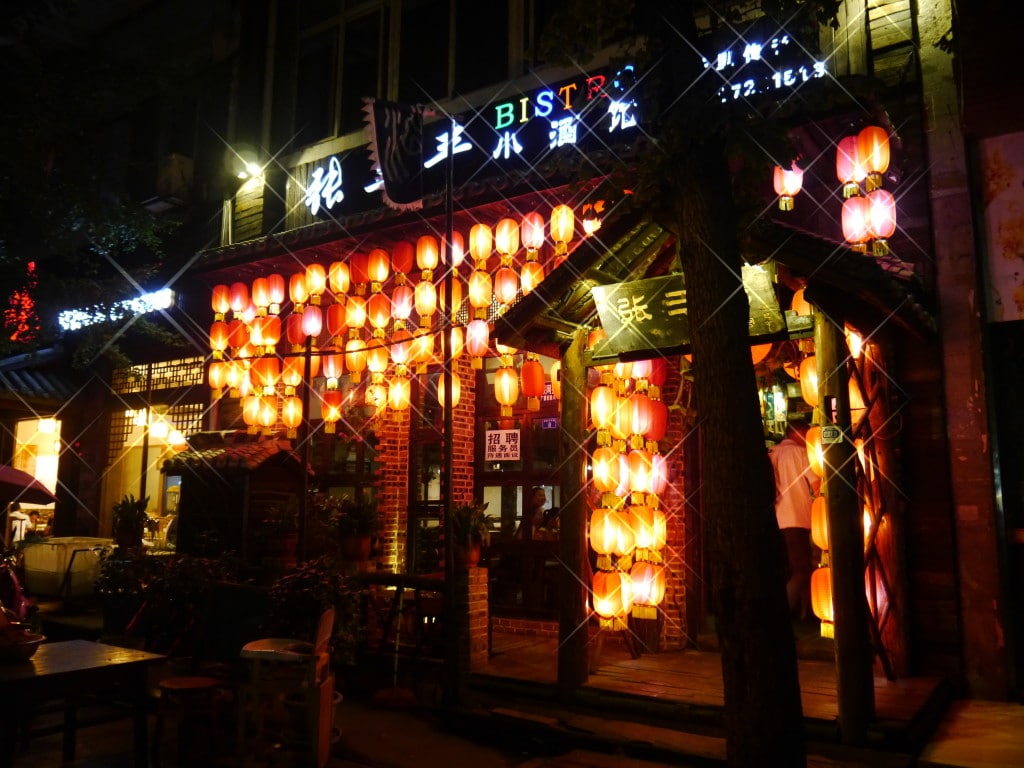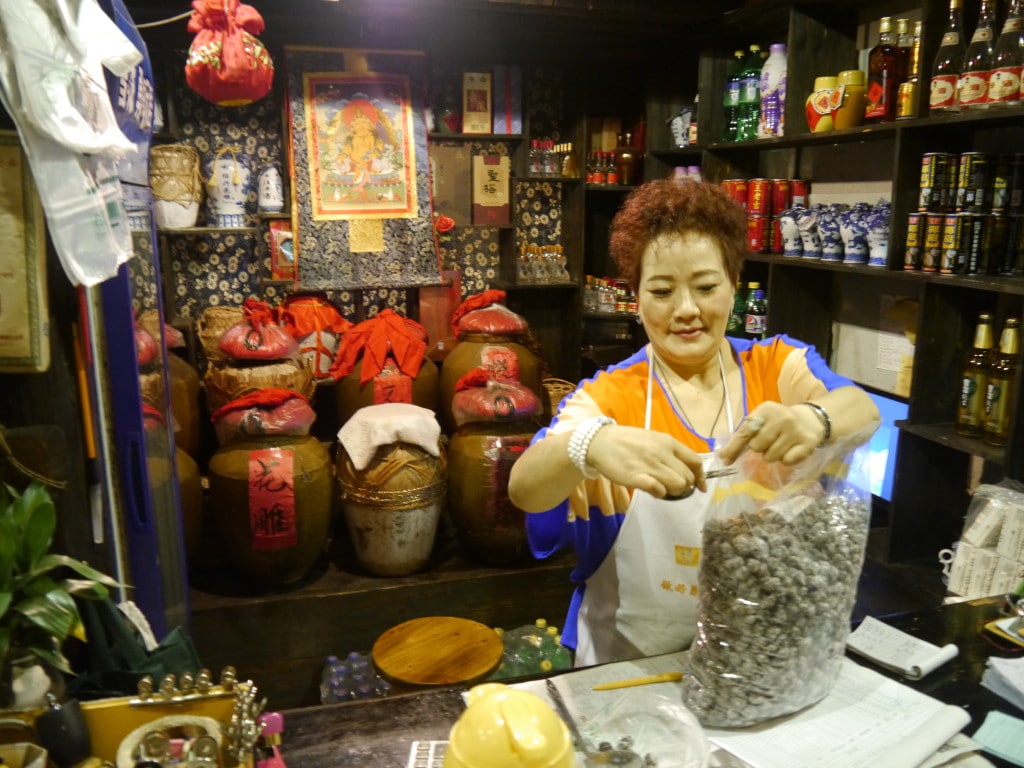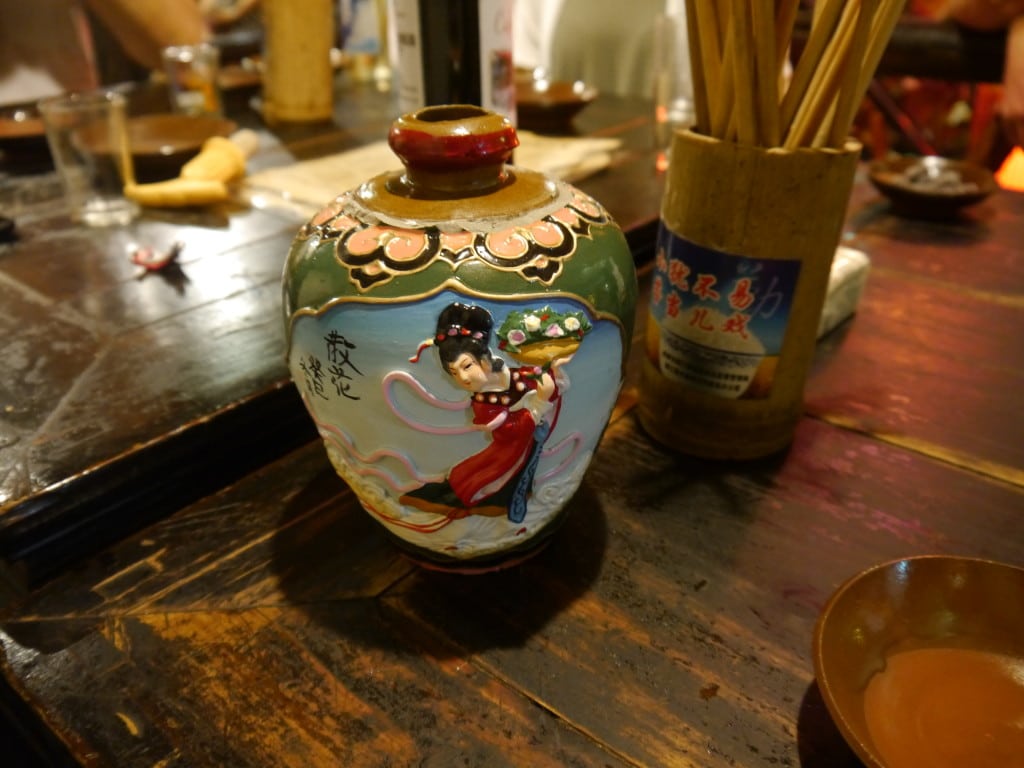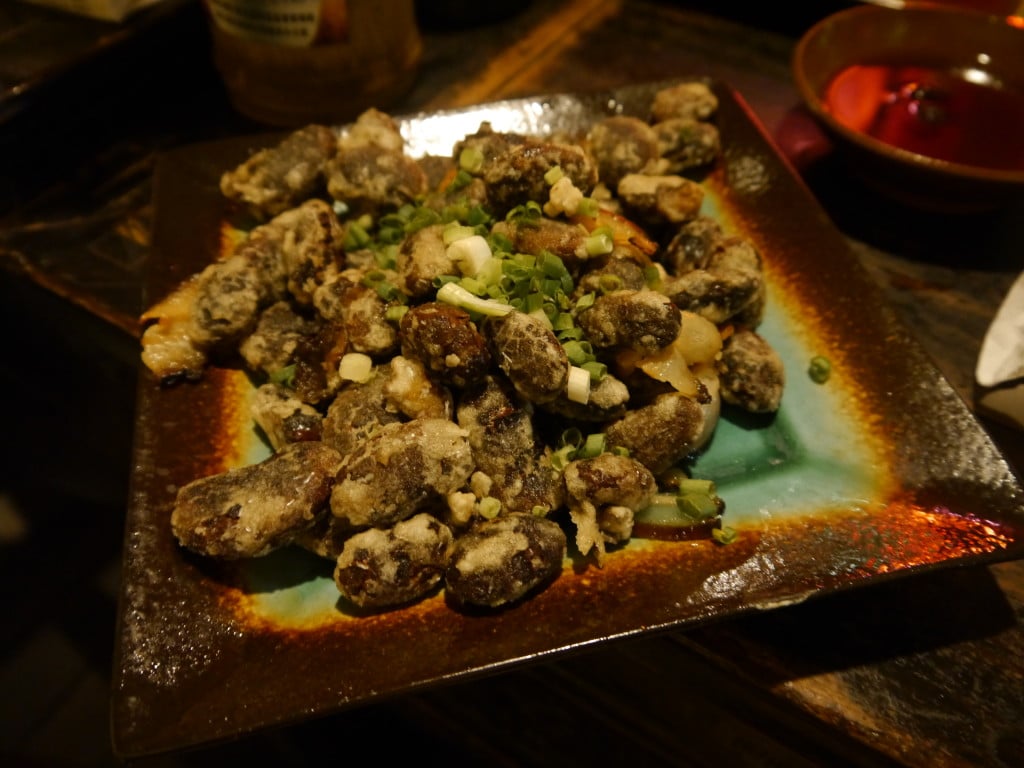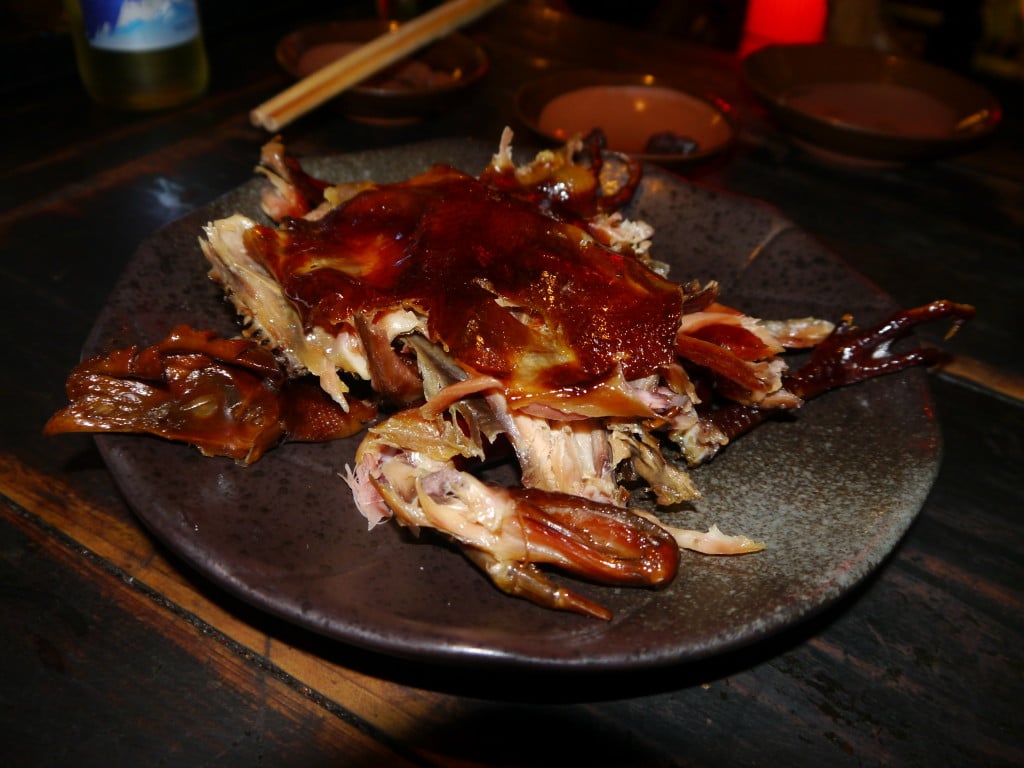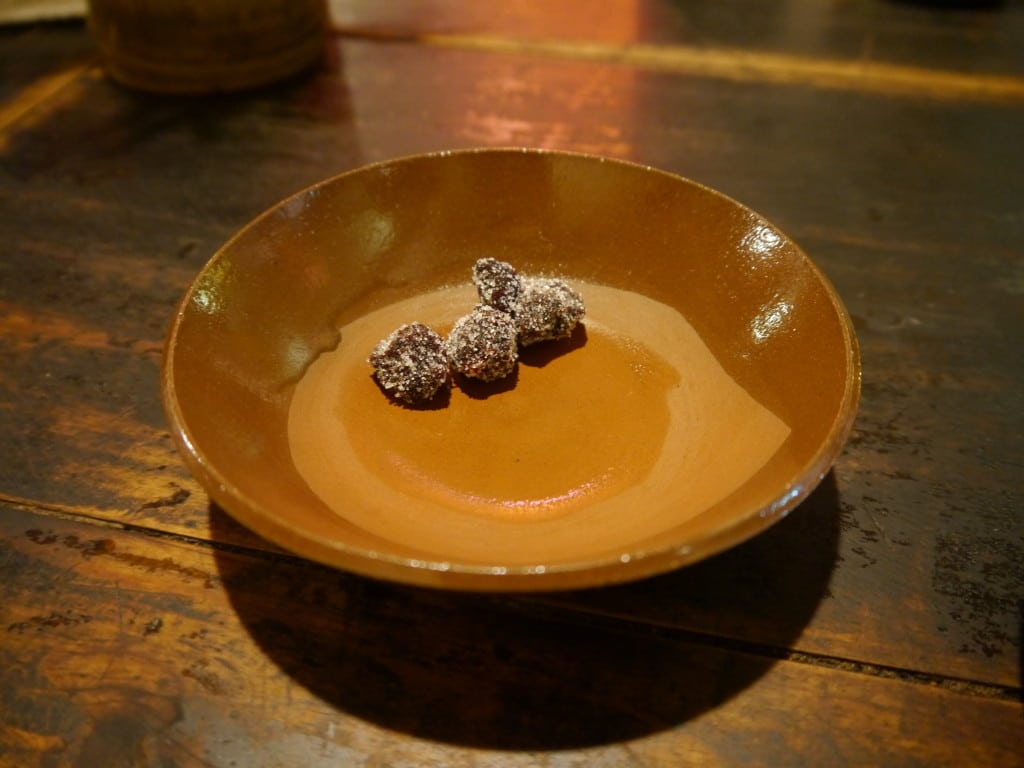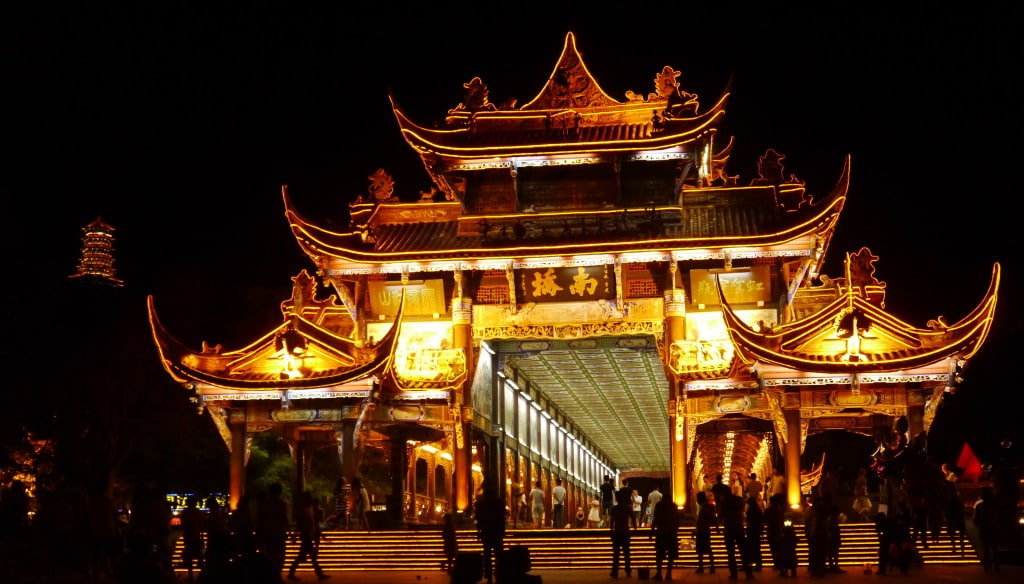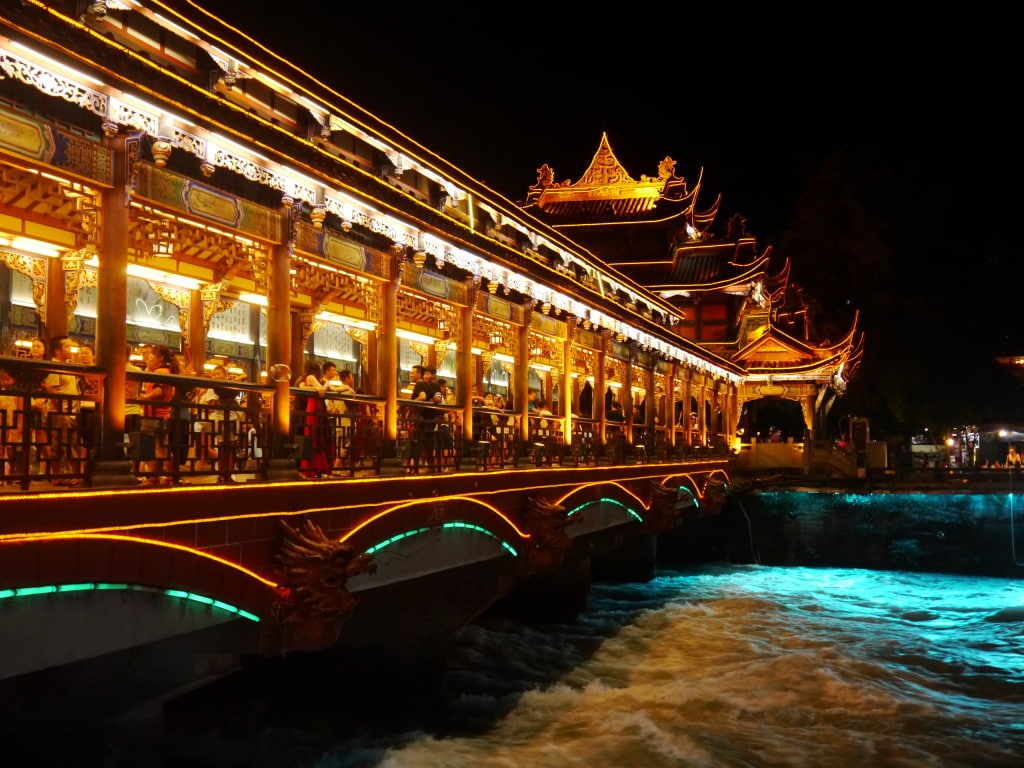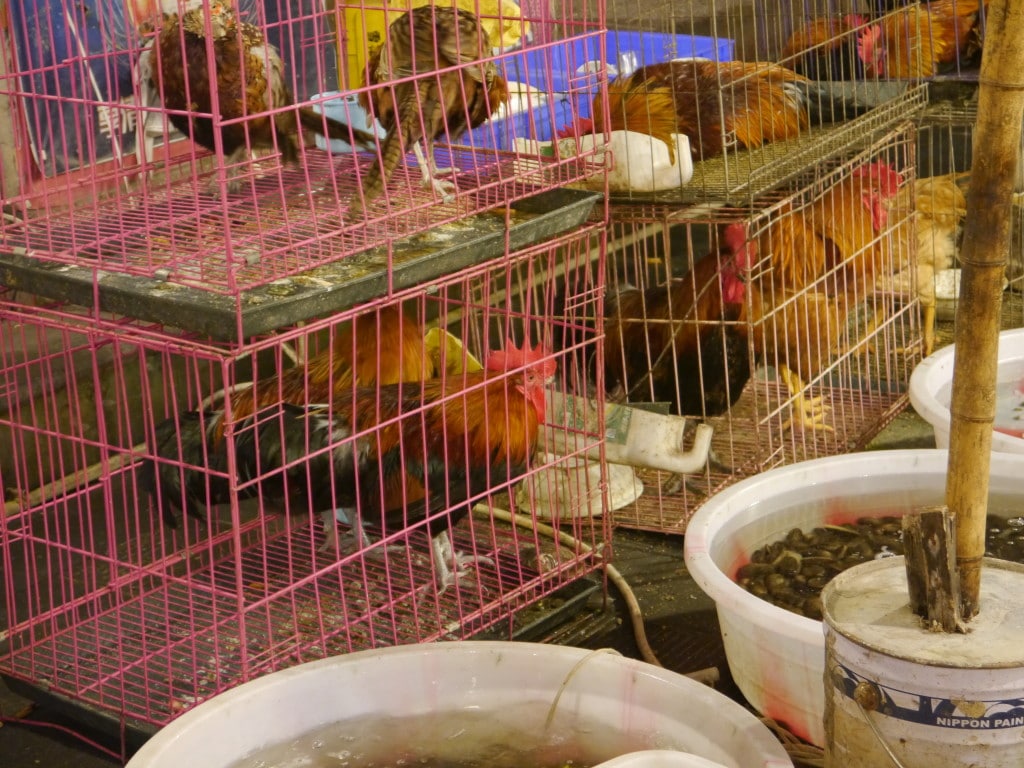The stay at the Six Senses Qing Cheng Mountain had been nothing short of perfection by the time we were headed to Dujiangyan for dinner.
Olaf, the very attentive and genuinely caring Customer Experience Manager, had arranged to take us for dinner in town. “Would you mind if the Six Senses F&B Group Manager joined us?”, he politely asked. I was excited that he would, for Sichuan’s cuisine has been listed by UNESCO and I couldn’t ask for a more formidable company than him to discuss recipes over a traditional dinner.
Dujiangyan is a few minutes away from the Six Senses and had the feel of a small provincial town, by Chinese standards at least. With only 600,000 inhabitant this is a manageable town on foot, as we would later discover.
Dinner had been booked at a local restaurant without English translation. Joining my friend and I were Olaf, the Group F&B Manager and his wife, and the Six Sense Spa coach who was putting the final touches on the Spa, due to open two weeks after our visit.
The place looked like someone’s attic. The front desk was filled with clay pots stocked up in various steps and decorated with the usual blue and white china we are used to seeing on the table. Red lanterns hanged outside around the main door as if inviting us to an Opium’s Den.
Inside, the red light theme continued. We climbed steep dark wooden stairs to a balcony above the entrance and sat on narrow benches that were much more comfortable than they looked. Olaf had warned us that we were supposed to drink lots of yellow wine and that a dancing lesson had been arranged after dinner. I did consider having more wine as the night progressed to make sure I did away with any inhibitions but, thankfully, the dancing threat never materialized, possibly because we got engrossed in dinner conversation and did not make it on time.
UNESCO recognized the uniqueness and value of Chengdu’s cuisine in 2011 so I was excited to know what all the excitement was about at one of the best restaurants in town, as recommended by Olaf, who had been living in Chengdu for a few years already and could speak Chinese.
Most recipes in Sichuan are known for their liberal use of chili and garlic and for the pepper of the same name. Although Sichuan pepper is not actually a pepper but the fruit of a tree, it has the look and feel of other peppercorns and a similar flavor. But beware, munch on just one tiny berry and your mouth will go tingly and numb straightaway. This tingling feeling was something I had never experienced before and felt exactly like when we were kids and would stick our tongues in a mild electric current at science class. The numbness helped bring up the tolerance for pungent and spicy flavors so the heat did not hit me as badly as I had feared.
Sichuan cuisine dates back to the end of the Qin Dynasty, in 200 BC but it has evolved significantly over time due to various incursions, trade and influence from nearby countries, like Thailand and India, as well as ingredients brought over from America, like the chilis that today make Sichuan food known around the world.
The widespread use of chili is closely linked to the weather and the landscapes of Sichuan. In the humid and hot summer months, chili is believed to cool the body and open the pores. During the cold winter, chilis help keep warm. The humidity of the weather and the abundance of water can be credited for the lush mountains and the fertile farmland. On the first day of our trip, the sun was shinning bright and the sky was blue. “You are very lucky,” uttered our guide, Carol, as we drove towards the Qiang minority village, “It rains a lot in Chengdu, in fact, we only have ninety days of sun a year”. I suddenly felt extremely lucky. The landscapes and the mountains looked so stunning under the clear skies. I can imagine how, in such heat, anything that cools the body, at a time when air-conditioning and fans didn’t exist, would be welcomed.
Back at our Opium Den, the table became crowded very quickly as Olaf took out the bottles of French wine he had brought from the resort and a clay pot holding the famous yellow wine magically appeared. Prettily designed and hand-painted, the clay container was filled from a larger sealed clay barrel that was supposed to keep the wine for decades. It was fascinating to discuss wine matters in a Chinese restaurant in Sichuan.
Is it made with sweet table grapes? Is it fermented from another fruit? Yellow wine, I later discovered, is an alcoholic beverage made from water, cereal grains such as rice, sorghum, millet or wheat and a jiuqu starter culture. It tasted just like the Moscatell of my childhood, the one my dad still keeps in the basement in a decades old barrel and replenishes every year with the sweet wine. Because os its sweet, refreshing and light flavor it paired beautifully with the hot, pungent and salty flavors of the food.
Dishes started to land on our tables shortly after the wine was poured on shallow clay glasses containing sugared prunes. The prunes were meant to be eaten at the end of the meal, after they had been soaking in wine for the entire meal. We alternated red Pinot Noir wine with the local yellow version but the yellow wine faired much better.
There were double-cooked broad black beans the size of coins with a soft heart that I just could not stop myself from munching on. The famous mapo tofu with ground beef and chili was sprinkled with the red and green spice until properly sunken in an oily broth. It is one of the regional specialties and the regular suspect at any Sichuan meal.
Then came the boiled and fried pork stripes. Looking and tasting very similar to bacon, we had the delicious cured meat at every meal for the entire stay. We just could never have enough of the flavorful and tasty dish. Every place we ate at offered it in their own version. At the Six Senses, they cooked it the healthiest way, drier than the very fatty and oily versions we tasted at the various other restaurants, my favorite version I will have to admit.
The star of the restaurant, and the reason why it was so popular, was the smoked chicken. At first, the sighting of a dead chicken’s head resting lifeless on my plate put me off eating anything that was attached to it but, in this case, I made the effort to oversee the animal’s eyes and went straight into the most delicious chicken meat I have ever tasted. Slightly dried and decidedly smoked, the meat was deeply concentrated in flavor every bite was a lesson in heritage and slow-cooking techniques. The chicken was wild, forget farmed animals, this was the real deal and had been fed as they used to, by whatever the farmer had left over. When I was a child, the neighbors had chicken for their own consumption and eggs and we used to go sprinkle corn kernels and vegetables left from the meal on the floor for them to eat. It was as wild, natural and organic as it gets.
On top of the protein dishes we also ordered delicious spinach and crunchy cabbage. Despite I was arriving in China after a week in North Korea and the last thing I wanted to eat was cabbage, in any form, I found the refreshingly sweet side simply delicious.
They say the food in the “Heavenly country” of Sichuan is composed of seven basic flavors: sour, pungent, hot, sweet, bitter, aromatic, and salty. Our table had them all. There was the pungent tofu, the sweet yellow wine and prunes, the salty beans, the aromatic chicken and bacon, the ever-present heat. But above all, Sichuan cuisine is expected to offer all of these flavor in every dish and the dinner we savored was a combination that was as complex as it was impossible to distill.
Our meal was also a lesson in history, tradition and love for cooking. Every dish was skillfully prepared with a combination of more than ten ingredients to bring out the regional flavors.
After such a feast we had to have a walk along the majestically magic city of Dujiangyan, a mesh of irrigation canals that were built in 250 BC and still remain not only useful but technologically unbeatable despite Humanity’s advancements in the field.
Designed to control the flood waters and avoid the damage they caused every year while watering large farm lands, the irrigation system is another UNESCO-listed site. At night, as the water fiercely flows through the city’s blue-neon illuminated bridges, the force of tamed nature is obvious. Canals and rivers want to overflow yet they are contained by the superiority of century’s old Chinese engineering.
The city’d old part is made of several narrow pedestrian streets filled with bars and restaurants. The produce and live catch is displayed in large buckets, alive, submerged in water. Land animals are held in lines and lines of metal cages. The cacophony of sounds and colors is overwhelming. There are dozens of restaurants all displaying much the same catch offering under the plastic roofs. We see shellfish and fish of all types and sizes. There are jumping frogs and chicken. Pheasant and duck, roosters and chicks.
Away from the water there are beautifully lit temples in warm hues of orange, yellow and red. Pagodas pointing at the sky, as if trying to reach for the moon. They are open to the public so we wander into one of them, quiet and empty, the spirituality of the place brings silence in all four of us.
Up in the mountain we see a tall five-story pagoda. The mountain is black, as dark as the night so the temple looks as if floating.
Dujiangyang is a place waiting to be discovered. Devoid of any tourists but locals and mesmerizing, fascinating and delicious at the same time. It made me wonder what other Chinese gems I may have missed out on. Chengdu, I will return.
- Check if you need a visa, get help processing it at iVisa.
- Never ever leave without travel insurance. Get affordable coverage from World Nomads or long term insurance from Safety Wing.
- I find all of my flights on KAYAK. Check their Deals section too.
- Search for all your transportation between destinations on the trusted travel booking platform Bookaway.
- I book all my day trips and tours via GetYourGuide, they are the best and their tours are refundable up to 24h in advance.
- Get USD35 off your first booking with Airbnb.
- Compare hotels EVERYWHERE at HotelsCombined and book with Booking.com.
- Compare car rental prices at Rentalcars.com

